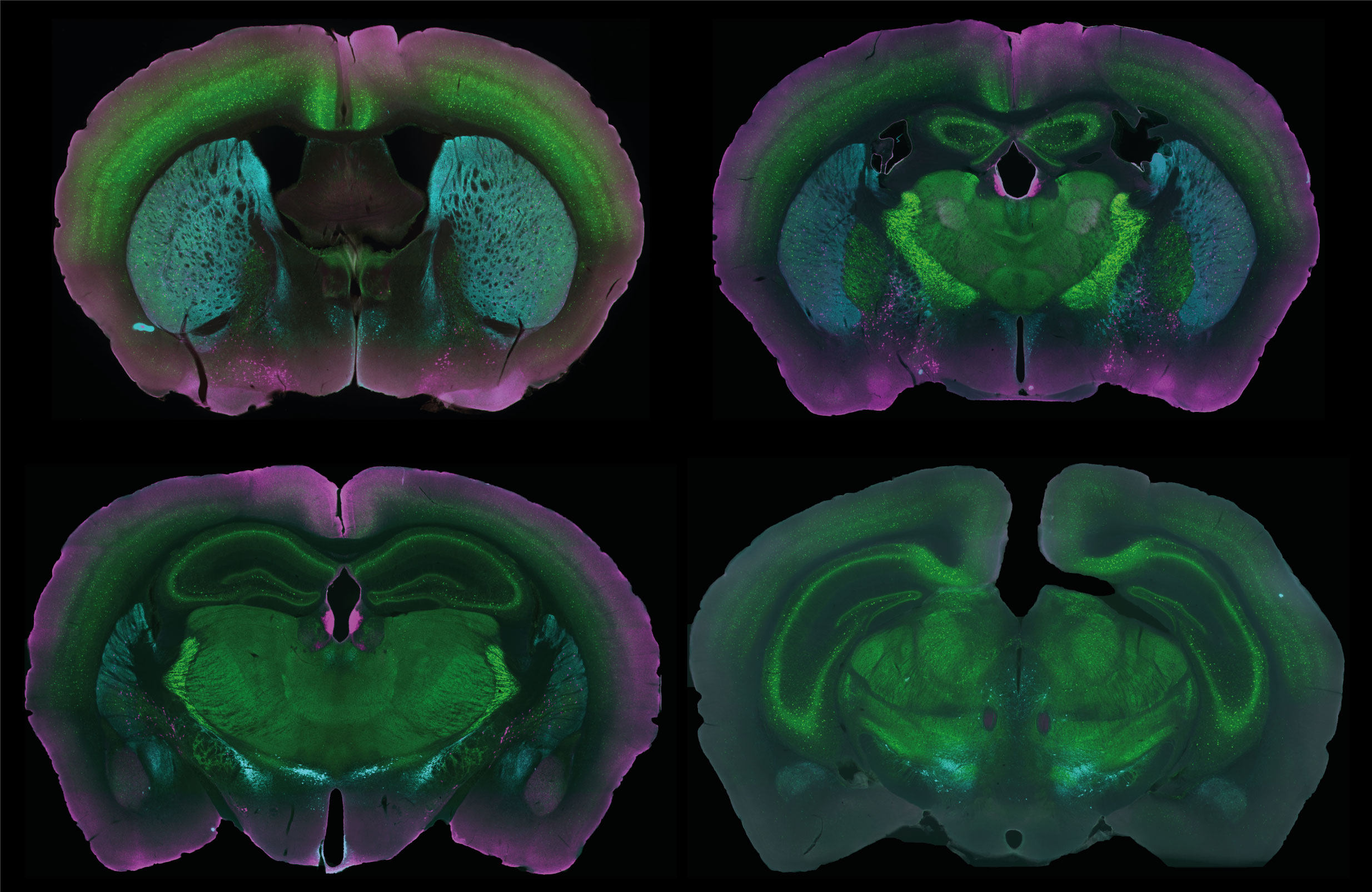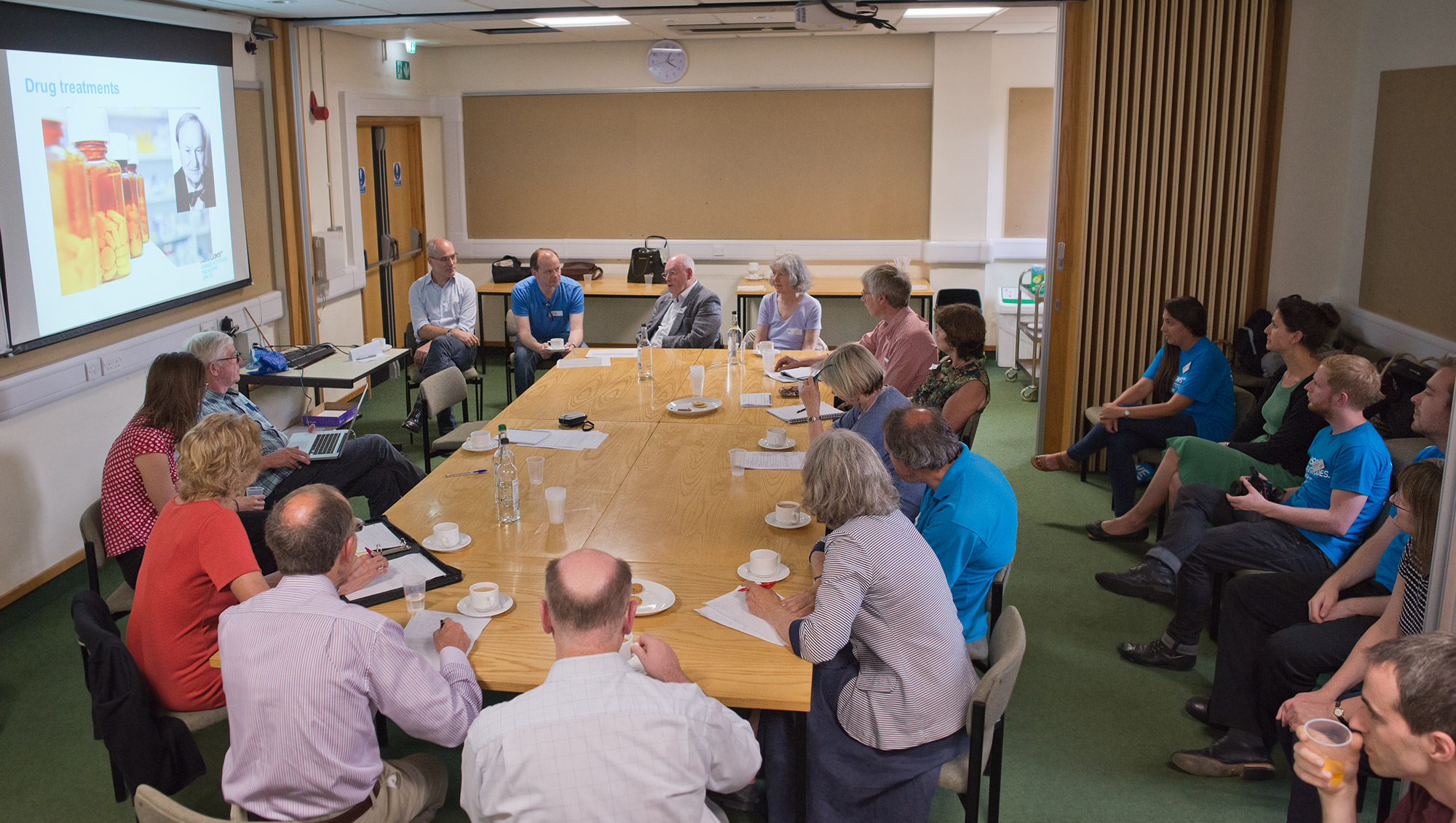
The Unit recently hosted a group of staff and lay members of the research charity Parkinson’s UK who have a particular interest in the use of animals in biomedical research. The visit was co-organised by Paul Bolam, Emeritus Senior Scientist at the Unit, and Claire Bale, Head of Research Communications and Engagement at the charity. The visit began with Unit Director Peter Brown and Deputy Director Peter Magill highlighting how research using animals has advanced research into, and treatments for, Parkinson’s disease, as well as some other benefits arising from the mutual exchange of ideas and discoveries made in the clinical and “basic” research fields. The open discussion session then focused on why, how and when animals are used in Parkinson’s research and, more generally, how animal use in scientific procedures is regulated in the UK. During a tour of the Unit led by early-career scientists Paul Dodson and Natalie Doig, the visitors were shown new results from work in animals on the structure and function of dopamine-releasing nerve cells, which are especially vulnerable in Parkinson’s. The visitors were also shown mouse models of Parkinson’s disease.
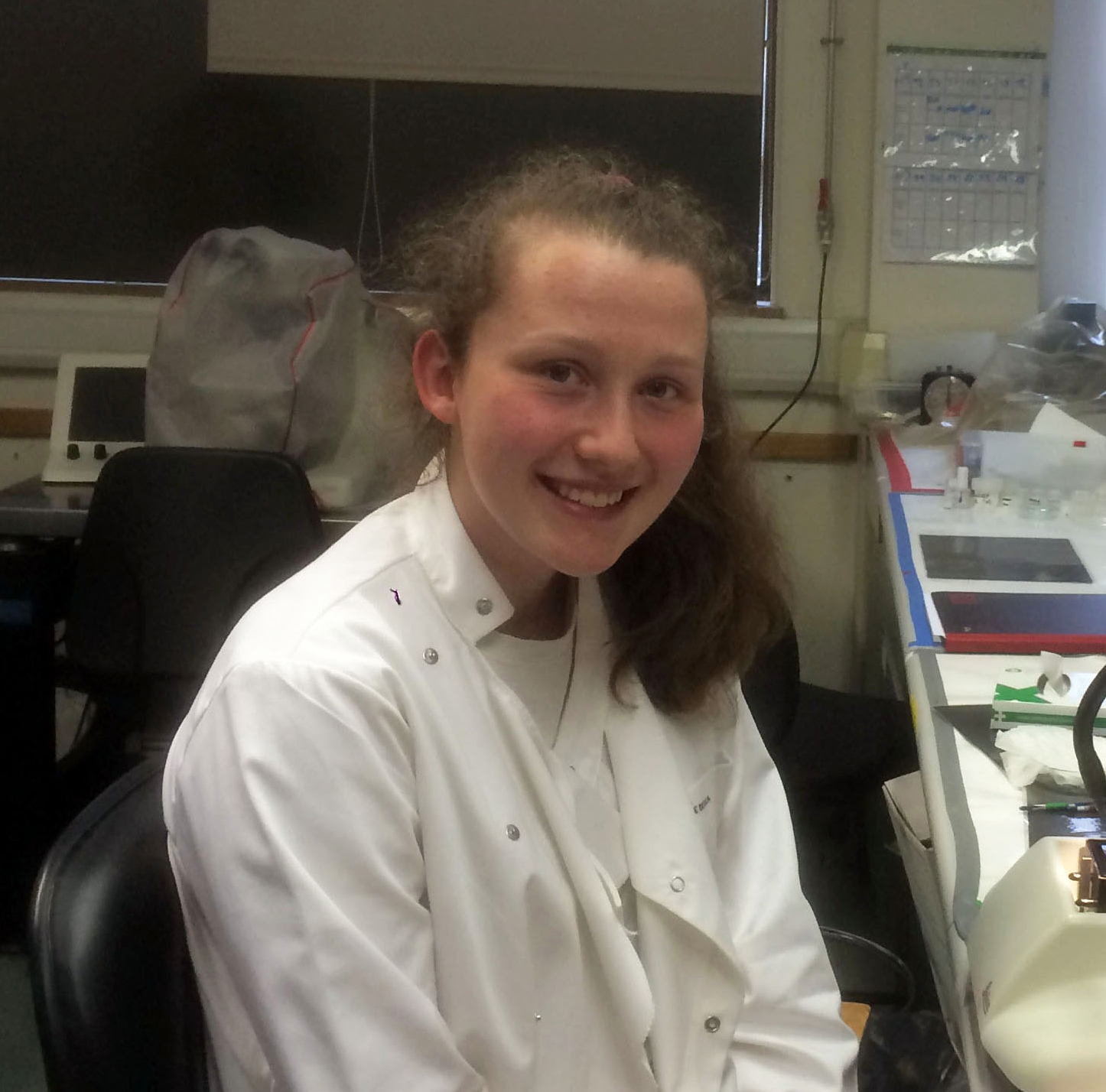
This week, members of the Magill Group were playing hosts to Anezka Macey-Dare, who is currently studying for her A-Levels at Headington School, Oxford. Anezka has a keen interest in biomedical sciences and neurology, and following a recent visit of Unit scientists to her school, came to the Unit to learn more about the practical side of neuroscience research in a real working lab. During Anezka’s visit, she viewed several stages of a typical experiment in the lab, and received training in neuroscience concepts. Anezka also gained ‘hands on’ experience with some anatomical and molecular approaches to studying brain function. The results from Anezka’s immunofluorescence labelling experiments were excellent!
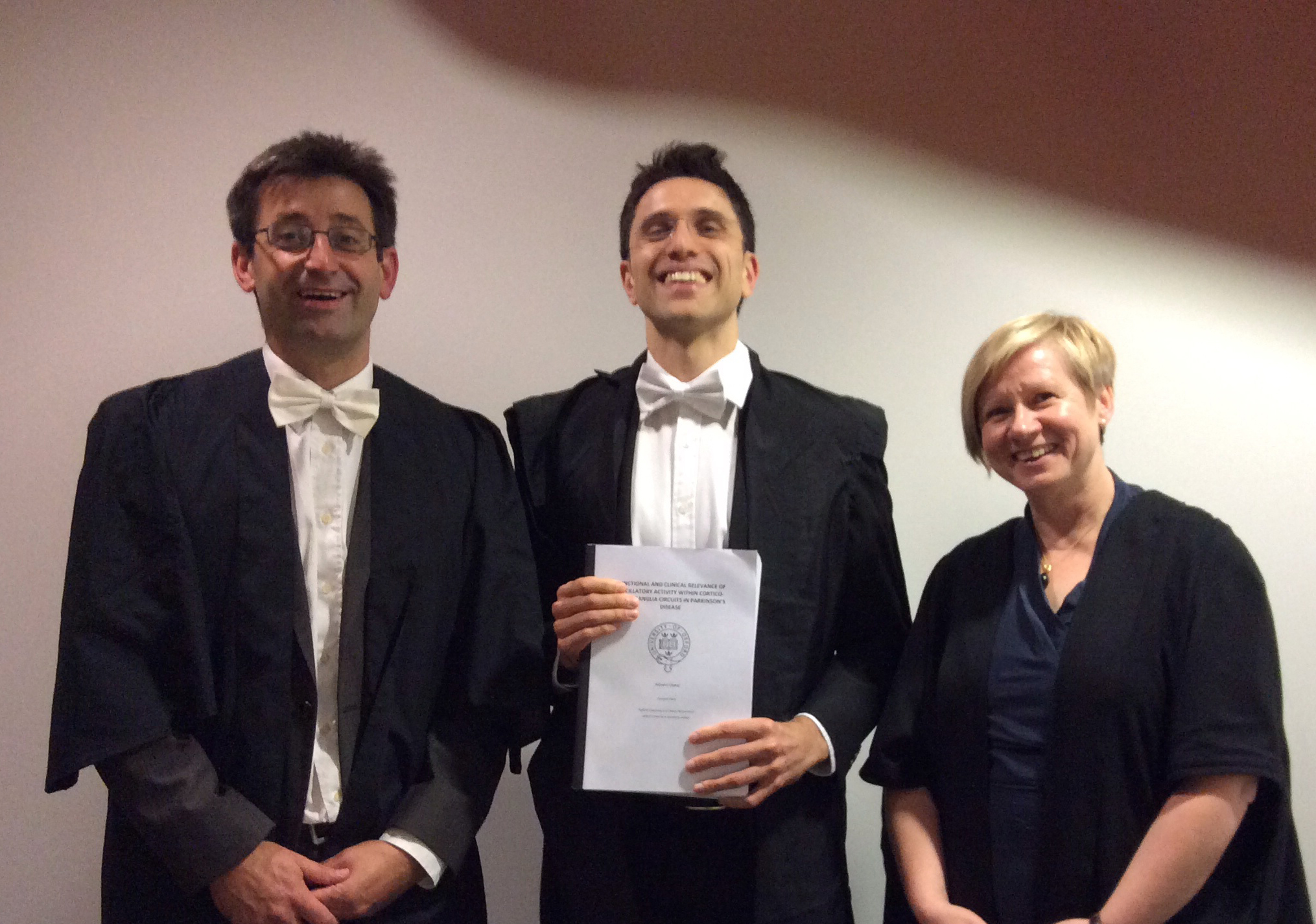
Our congratulations go to Unit D.Phil. student Ash Oswal for successfully defending his doctoral thesis, entitled “Functional and clinical relevance of oscillatory activity within cortico-basal-ganglia circuits in Parkinson’s disease”, in his viva voce examination on 3rd August 2015.
Ash’s viva examiners were Professor Mark Woolrich (Oxford Centre for Human Brain Activity, University of Oxford) and Dr Bettina Pollok (Institute of Clinical Neuroscience and Medical Psychology, Heinrich Heine University, Dusseldorf).
Ash was supervised by Professor Peter Brown at the Unit and by Dr Vladimir Litvak (Wellcome Trust Centre for Neuroimaging, University College London), and is a MRC Clinical Training Fellow.
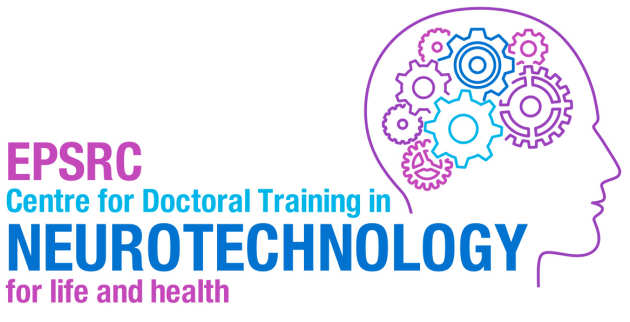
We are pleased to announce that the MRC Brain Network Dynamics Unit is now an official external affiliate of Imperial College London’s Centre for Neurotechnology, including the EPSRC Centre for Doctoral Training in Neurotechnology for Life and Health. As one of only a handful of Centre academic affiliates, the Unit can now build on its interactions with the world-class Institute of Biomedical Engineering at Imperial, and Unit members will have the opportunity to co-supervise Imperial College graduate students on a pioneering 4-year (MRes+PhD) course at the interface of engineering and neuroscience. Imperial College’s Centre for Neurotechnology also has strong links with industry, and on our Vacancies page we are pleased to advertise the first joint academic/industrial studentship in the field of Neuromodulation Microelectronics, co-supervised by Dr Emm Drakakis (Bioengineering, Imperial College London), Dr Tim Denison (Medtronic Inc., USA), and Professor Peter Brown (MRC BNDU, Oxford).
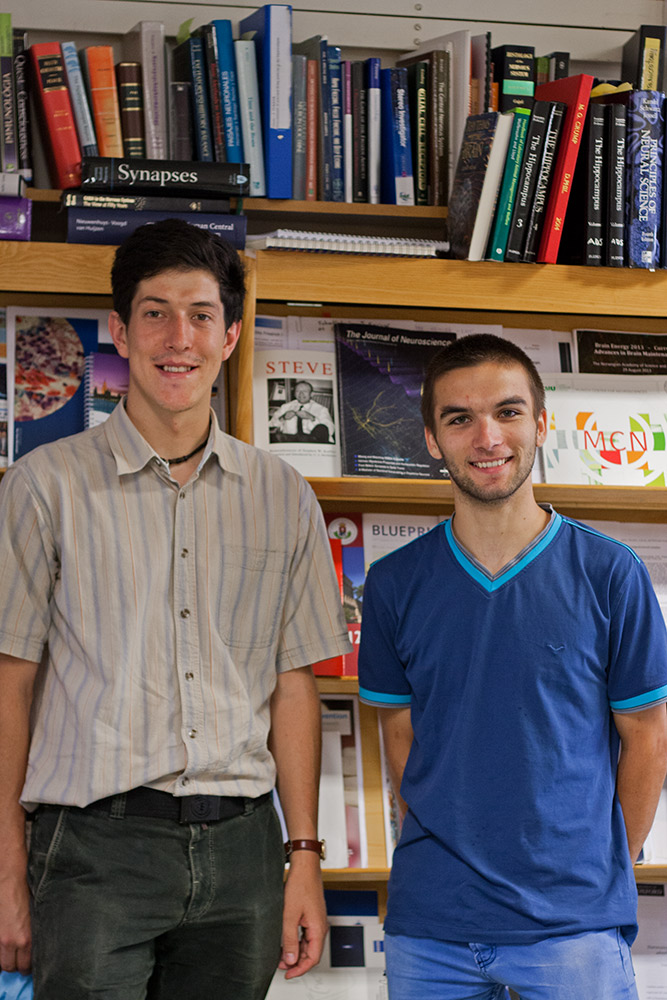
Welcome to Istvan Mihaly and Istvan Lukacs, who will spend their European Erasmus scholarship in the Unit this summer. They just finished 5th year medicine at the Medical University of Targu Mures, Romania. Istvan Mihaly joins David Dupret’s group and is supervised by Dr Pavel Perestenko in new virus-based labelling methodologies, optogenetics and immunocytochemistry. He plans to specialise in the field of clinical and experimental neurology. Istvan Lukacs has visited many times, and is exploring the synaptic targets of pyramidal cells recorded and labelled in vitro in the human associational cerebral cortex using microscopic methods.
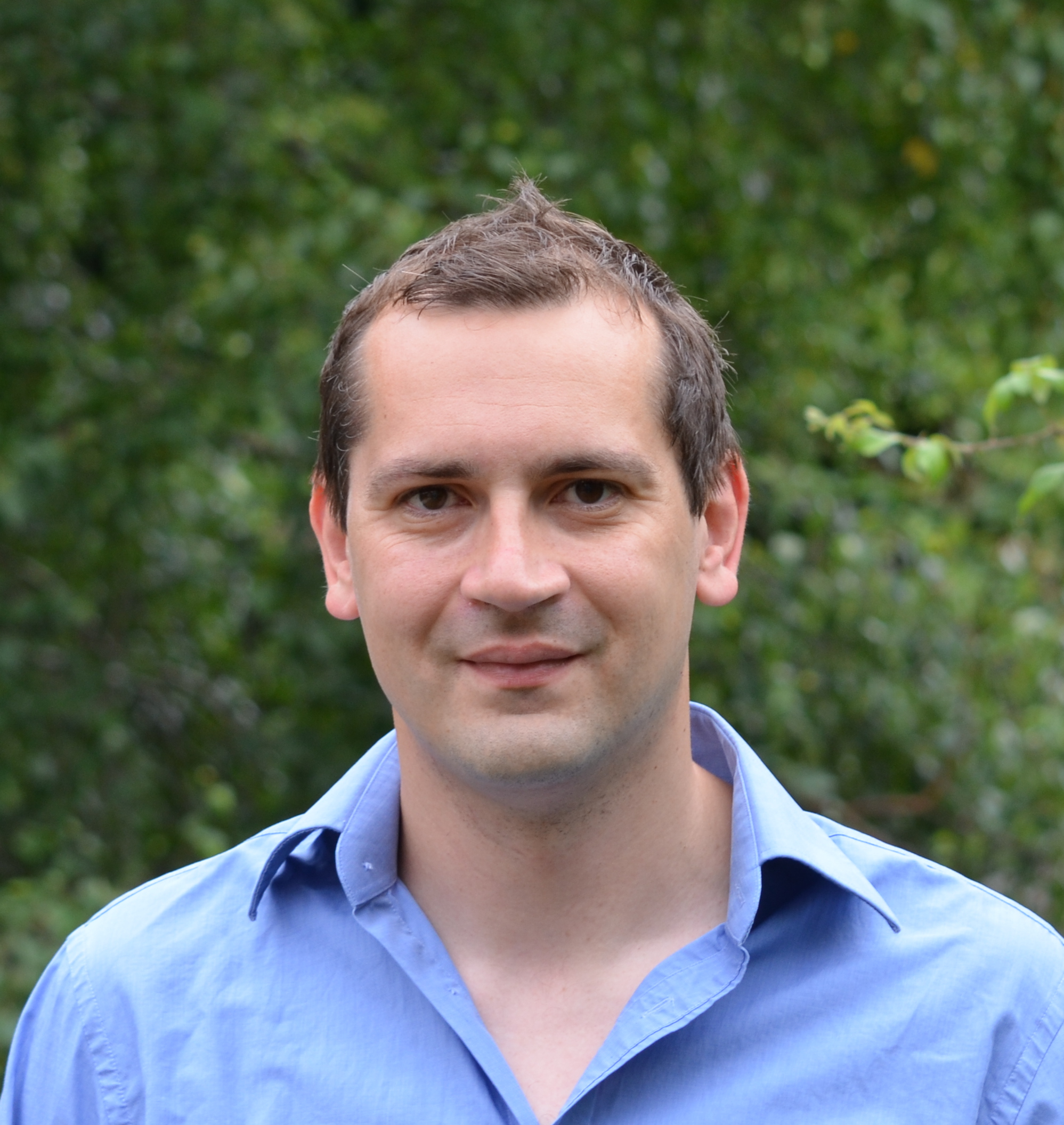
We are delighted to announce that Unit scientist Dr John-Stuart Brittain has been awarded a MRC New Investigator Research Grant (NIRG) to pursue his new research programme, entitled “Non-invasive brain stimulation to suppress pathological tremors”. John’s research focuses on the neural mechanisms underlying tremors, such as those occurring in Parkinson's disease and Essential Tremor, with a view to developing new therapeutic treatments. For some years now John has been working with Professor Peter Brown, and this award allows John to extend his work with additional collaborations as well as to apply new research tools like functional magnetic resonance imaging.
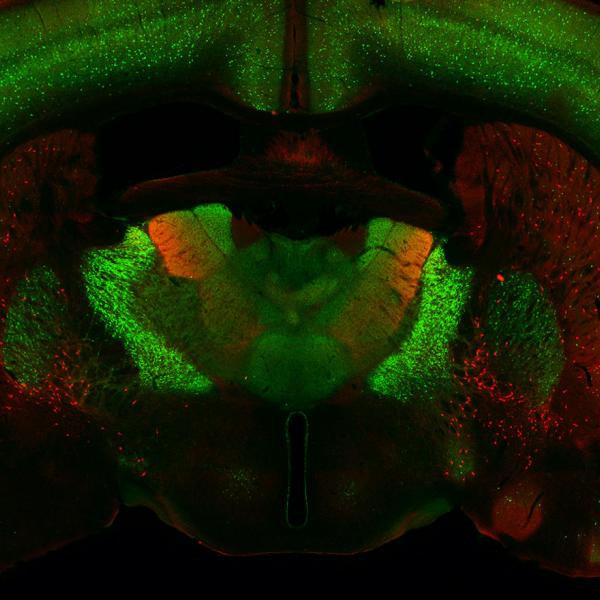
This week, members of the Magill Group were playing hosts to Olivia, who is currently studying for her A-Levels at Headington School, Oxford. Olivia has a keen interest in biomedical and human sciences, and following a recent visit of Unit scientists to her school, came to the Unit to learn more about the practical side of neuroscience research in a real working lab. During Olivia’s visit, she worked with all members of the Magill Group, and viewed every stage of a typical experiment in the lab. Olivia gained ‘hands on’ experience with some anatomical and molecular approaches to studying brain function, and also received training in neuroscience concepts. The results from Olivia’s immunofluorescence labelling experiments were first class!
Unit Director Peter Brown proved to be a most accommodating volunteer for a demonstration of ‘hands-on’ brain research at a recent visit from Generating Genius, during which he and Unit Research Associate Huiling Tan showed visitors how to use a magnetic stimulator to activate his brain and cause movement.
Generating Genius is a registered Charity that supports talented young people from disadvantaged backgrounds to realise their potential in STEM (science, technology, engineering and maths).
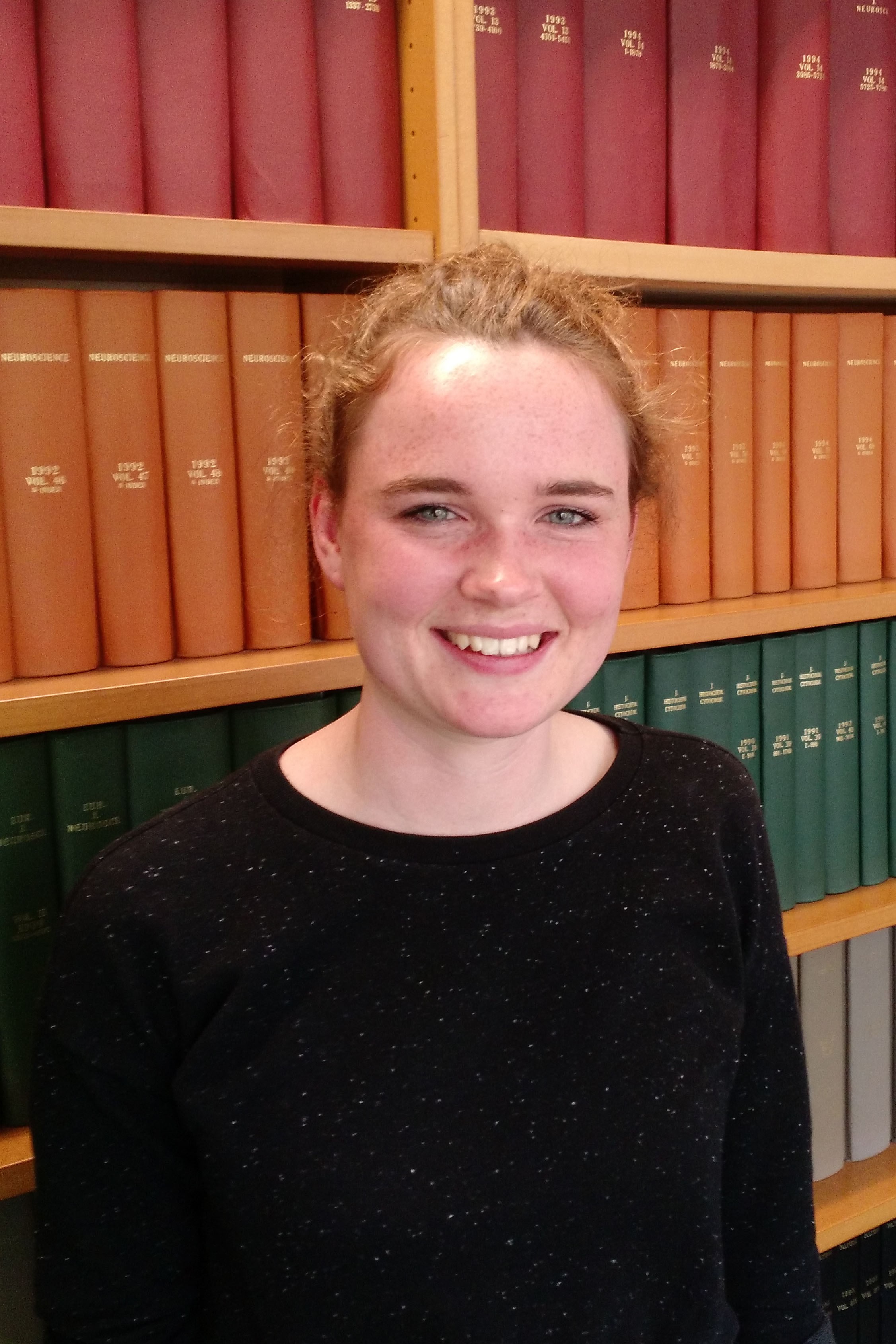
We are pleased to welcome Jennifer Culshaw for a summer of research and work experience in the Magill Group. Jennifer is currently an undergraduate student at the University of Leeds, where she pursuing a B.Sc. in Neuroscience. During Jennifer’s time in the Unit, she will work closely with Dr Paul Dodson and Anna-Kristin Kaufmann on a project investigating the diversity of midbrain dopaminergic neurons.
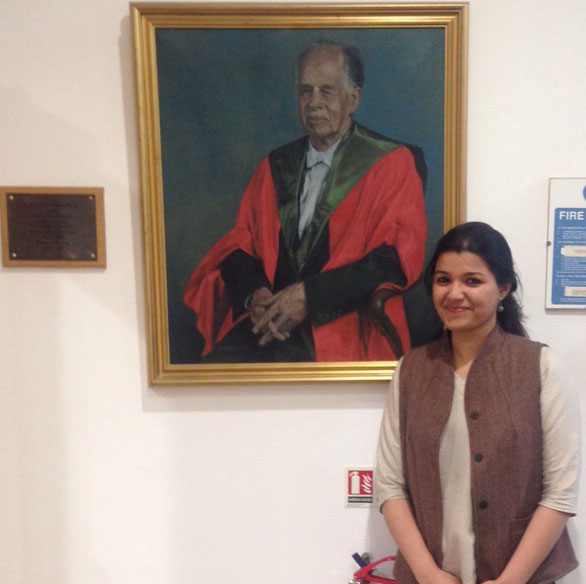
The Unit was well represented in this year’s Paton Prize Talks, with two students (Abhilasha Joshi and Anna-Kristin Kaufmann) each giving a presentation about their ongoing thesis research. Abhilasha, a second-year student co-supervised by Professor Peter Somogyi and Dr David Dupret, was jointly awarded this year’s Paton Prize for her presentation entitled “Hippocampal rhythmic activity and the firing of medial septal neurons in mice navigating in virtual reality”.
The Paton Prize is named in honour of the late Professor Sir William Paton, former Head of the University Department of Pharmacology, and is awarded annually to one or two students on the basis of general research excellence, the quality of presentation and the ability to deal with the adjudicators’ questions.
